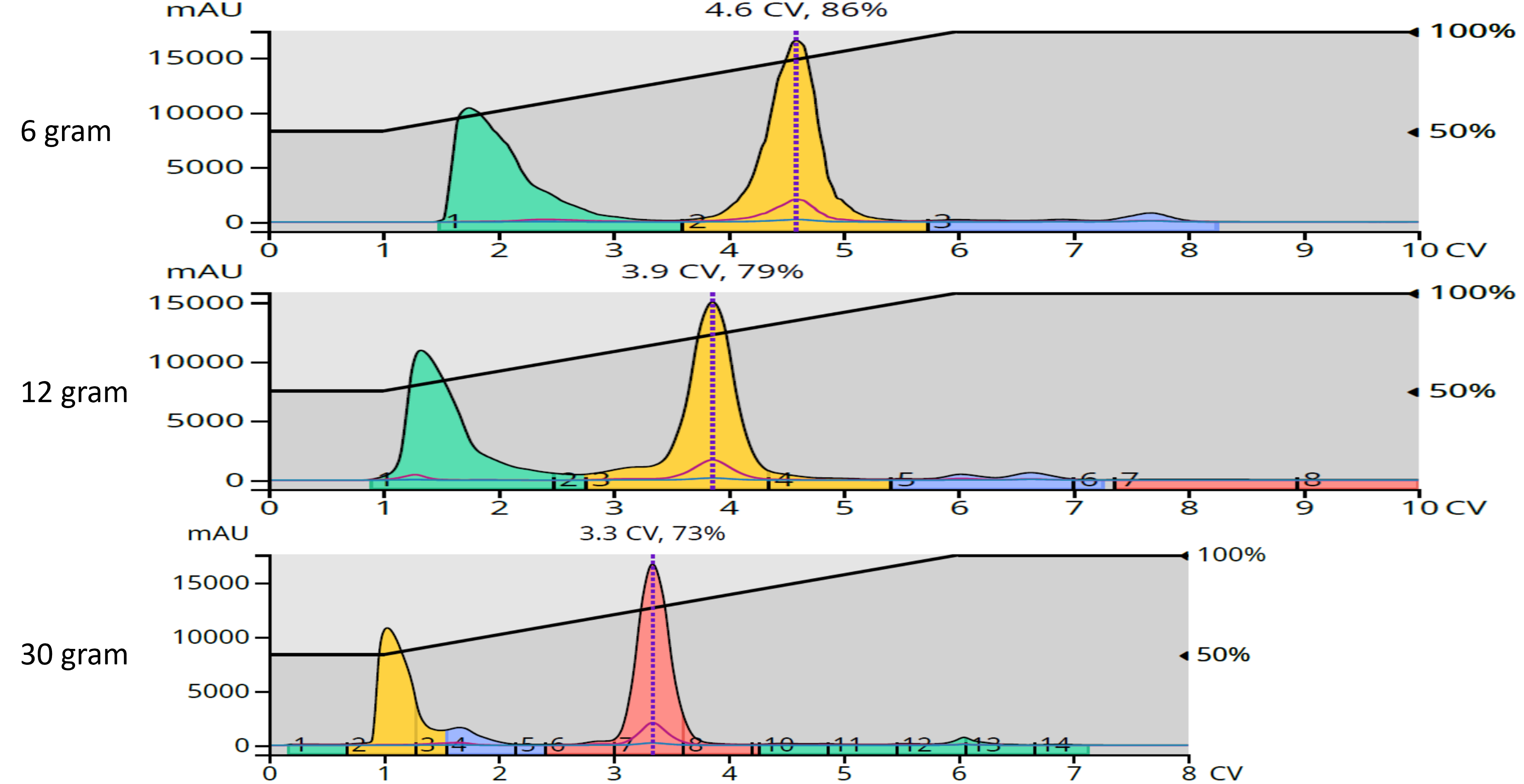For many years I have been publishing a blog on flash chromatography, especially related to its theory and application. It dawned on me today that one area I have not yet addressed is the impact of the flash system’s internal plumbing volume on a programmed gradient, so, here it is.
Automated flash chromatography systems contain a pump, gradient mixer, valving, and tubing all of which add extra volume to a gradient method. Depending on the system’s design, this “dwell” volume can dramatically impact the gradient, and likewise, the purification’s success. How much of an impact can be expected?
Well, I did not know so I decided to study the dwell volume’s impact by purifying the same sample with the same system (Biotage® Selekt) and gradient (50-100% MeOH in water in 5 CV) using three different Biotage® Sfär C18 columns, Table 1.
Table 1. Columns, flow rates, and sample loads used in this study
|
Column Size (g) |
Column Volume (mL) |
Flow rate (mL/min) |
Load (mg) |
|
6 |
9 |
20 |
25 |
|
12 |
17 |
30 |
50 |
|
30 |
45 |
50 |
125 |
The system’s dwell volume is a fixed value and, when compared to a column’s volume (CV), can be a significant proportion. The smaller the column, the larger the dwell volume to column volume ratio. The impact of this larger ratio is delayed elution volumes for all of the sample's components, Figure 1.

Figure 1. As column size increases the elution time, elution volume (CV), and % strong solvent decreases.
While the chromatograms in Figure 1 nicely illustrate the dwell volume/CV ratio impact, Table 2 shows just how much of a difference there is between target compound elution volumes and the amount of B solvent (methanol) required to elute it. Moving from a 6-gram column to a 12-gram column reduces elution volume 15% and the required amount of methanol by 8%. Moving up to a 30-gram column further reduces both the elution volume another 15% and %B 7.5%.
Table 2. Comparison of product elution volumes and %B
|
Column Size (g) |
Elution Volume (CV) |
Elution %B |
|
6 |
4.6 |
86 |
|
12 |
3.9 |
79 |
|
30 |
3.3 |
73 |
Other phenomena also occur with increasing column size which decreases the dwell volume to column volume ratio…
- Improved peak shape
- Improved resolution
Why are these phenomena true?
Well, the system blends the solvents at the same rate but delivers the solvent at the method’s programmed flow rate. Smaller columns use slower flow rates so the impact of the gradient is delayed which increases compound retention.
In these experiments the flow rates used provided similar linear velocities (0.14-0.16 cm/sec) therefore theoretically providing equal mass transfer partitioning kinetics during the separation. From the data, however, we can see this is not true as peak shape and resolution improved with increased column size so there must be another reason – likely higher column plate counts (efficiency) as column size increases.
While column efficiency is often used in normalized terms of plates/meter. Actual separation performance differences, as seen here, are also impacted by column length (think plates/column). So shorter columns have lower plates/column vs. longer columns.
So, now you know that when using smaller columns that their purification performance will not be as good as larger columns. This is good to know if you need to scale-up your purification as your results will only improve.
For more information on flash chromatography strategies please download our whitepaper Inspiring Productivity with Modern Flash Chromatography.

